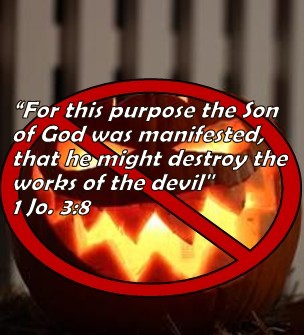
At first glance, one could suggest that these two terms might be synonymous. In fact, one hundred years ago they sometimes were used interchangeably.(i) But as the English language continues its forward march of change, it has since become necessary to define these terms separately.
The term nonresistance is taken from Matthew 5:39 where Jesus tells us to “resist not evil”. This means not “resisting” in any form—militarily or personally. It means showing genuine love to all—friend or foe.
During the Old Testament time period, God allowed, and even at times commanded, his people to go to war and to execute punishment on the lawbreakers. But in the New Testament Jesus commands us to love our enemies (Matthew 5:24) and to “overcome evil with good” (Romans 12:21).
These teachings and commands are for the Christian and the church—not the unbeliever and the state. It permeates every area of our lives with one exception—to “resist the devil” (James 4:7). But this is referring to a personal or church responsibility for believers—of not giving in to the devil’s temptations in our “own” lives. Plus, it is a defensive action, not an offensive one like pacifism is. Never are we told to resist (fight against) the evils in society. This includes a willingness to pray for and submit to earthly authorities even if we cannot obey them in certain situations where obedience to them would constitute disobedience to God as written in His Word, the Holy Scriptures.
The root word “pacifici” is a Latin word taken from Matthew 5:9—“Blessed are the peacemakers”. The dictionary defines pacifism as “opposition to war or violence, as a means of settling disputes”. At first glance this seems very similar to nonresistance and as was previously noted they can (at times) be interchanged. But there is an activism or particular forcefulness that is often associated with it. For example, we use a “pacifier” when we want to make fussy babies become quiet—it conveys a forced peace.
Pacifism could also be considered nonviolent “resistance”. (“Nonviolence” is a term used more recently in place of Pacifism.) It (Pacifism or Nonviolence) is the act of rejecting physical violence while working on an endeavor to obtain political, economic, or social end goals. It is a surface rejection of violence or physical force, except in cases where it is deemed absolutely necessary in order to advance the cause of peace. (The ends justify the means.)
The pacifist aims to establish a better world by eliminating war. He attempts to bring peace and harmony among the unregenerate nations of earth, by working through political influence. In other words, he is trying to sanctify the unbeliever—reform the sinner—“Christianize” an unconverted society.
A pacifist apparently believes that man is basically good because he thinks that man’s efforts can bring peace to a fallen world. But the Bible does not agree that man is basically good. We see this where Jesus says, “All these evil things come from within, and defile the man.” (Mark 7:23)
A pacifist sees no distinction between the church and state and therefore the concept of the two-kingdom principle is lost. Because of this, the pacifist often fails to recognize the God-ordained role of the use of force in the peacekeeping function (within society & at the border) of the state (civil authorities). In Romans 13:4, we are told that “he beareth not the sword in vain”. Going to war and punishing the transgressor is all part of the God-ordained responsibility of the state.
Pacifism (and Nonviolence) are not peaceable. A pacifist is not at peace with his surroundings. Pacifists attempt to use peace itself as a tool or a weapon to accomplish their goals. Someone has said “I am a pacifist—with the emphasis on the ‘fist’.”
A pacifist has an inability to accept the fact that there are injustices, sin, and strife in a fallen world. Pacifists are often unwilling to suffer personal reproach quietly as Jesus himself gave us example (I Peter 2:20-23). The world’s greatest need is Jesus, not peace!
After Napoleon’s wars ended in the beginning of the 1800s, there was a merging of several peace organizations under an American organization called the American Peace Society. It was founded by a theologian named David Dodge. In 1816, a similar organization was founded in London, England, called the London Peace Society. These groups and others similar to them grew out of a frustration with armed conflict and out of a desire to rid the world of war.
The famous Russian writer Leo Tolstoy was a fervent promoter of pacifism. He was very influential and inspired many followers, among them Mohandas “Mahatma” (‘Great Soul’) K. Gandhi (who was the leader of the so-called “peaceful revolution” of India), who in turn influenced a young black preacher in Birmingham, Alabama by the name of Martin Luther King Jr.(ii)
Following World War I, there was a great push by society in general and by certain civic groups in particular, for the elimination of war. Even world governments were concerned enough that the League of Nations was formed as an effort to prevent the world from taking up arms and again killing hundreds of thousands, or even millions, of soldiers and civilians in another global war.
Today, there are many world organizations devoted to world peace (pacifism). On the one hand this includes groups such as churches and religious (or faith-based) organizations and on the other hand, such secular groups as the United Nations, the Peace Corp. and so forth. In the 1960’s, the theme was civil rights and opposing the Vietnam War, in the 70’s and 80’s it was nuclear disarmament.
Pacifists are not just involved with issues relating to war. They have shifted their focus to other social justice issues such as: unequal distribution of wealth, racism, sexism, prejudice, gun control and poverty. Currently, the march toward social justice continues with the environmental movement, the feminist movements, socialized health care, LGBT rights, and minority entitlement, just to name a few.
The pacifistic ideas of today are sometimes called the “social gospel”, and the liberal Anabaptist churches are right there, marching in lock-step with the world regarding these ideas. How did the mainstream Anabaptists get there?
In conservative Anabaptist circles one sometimes grapples with this question, “Why should nonresistant people be interested in the teaching of war and related issues, especially in the classroom?” Several reasons could be given. One in particular which stands out is that wars have a profound influence on any given society. Wars change the status quo. This seems to be just as relevant in the church as it is in the general society.
A war influences our people because it forces us to confront specific issues. It is usually not very hard to practice nonresistance in a period of national peace. But as emotions rise in the general public when an enemy is threatening, it forces a nation to fight to preserve itself. This is when the effect of our stand, against the Christian participating in war, becomes obvious and needs to be sharply defined. To what extent can nonresistant people participate in the war atmosphere of a country? What is our attitude towards war, and what will be the end result of the decisions we are making?
During the Civil War and both of the World Wars, thousands of Mennonite young men were called to serve their country, and because of their nonresistant stance they were classified as conscientious objectors. However, the Mennonite church was poorly equipped to respond to the outbreak of World War I. There was a dearth of teaching, and conviction in general, in the Mennonite church at this time. And of course, the Biblical teaching on nonresistance was also lacking.
There also had been no prior negotiations with the government relating to the draft question and possible alternate forms of service acceptable to the Mennonite conscience. In trying to cope with the pressure from the Selective Service (the governmental agency responsible for the draft) the Mennonite Church reached out to other “nonviolent” church organizations to appeal in a unified way for recognition and tolerance.
The church groups that banded together included the Brethren in Christ, Mennonite General Conference, Lancaster Conference, and the Quakers. This mixture as represented here proved to be detrimental in watering down the traditional Biblical position on Nonresistance. The Quakers (who stood for nonviolence), for example, in spite of having the common ground of being opposed to war, were not on the same page as the Mennonite Church (who stood for nonresistance).
All this was happening, plus other more mainline Protestant groups tended to view war as immoral and evil—a direct result of the influence of pacifistic pressure from civic groups mentioned previously. They also tended to be weak on the principle of separation of church and state or maybe what is more properly called the two-kingdom concept. They placed a strong emphasis on pressuring the government to become more Christ-like. (iii)
During the period between the World Wars there was a consolidation of these groups under what became known as the MCC (Mennonite Central Committee). A lay brother, by the name of Orie O. Miller, was very influential in this organization for many of its formative years. The MCC under Miller, was very instrumental in introducing pacifism into the Mennonite Church. From this point on, we see a shift in the thinking, away from nonresistance and towards pacifism.
Observation of this shift becomes evident as one studies documents written by those who faced circumstances which called for clear direction relating to the doctrine of nonresistance.
The Dordrecht Confession of Faith (1632) XIV is very clear in its statement on revenge. (There is no ambivalence in its teaching about the role of the state versus the role of the believer within that state.) “From this we understand that therefore, and according to His (Jesus) example, we must not inflict pain, harm, or sorrow upon any one, but seek the highest welfare and salvation of all men, and even, if necessity require it, flee for the Lord’s sake from one city or country into another, and suffer the spoiling of our goods; that we must not harm anyone, and, when we are smitten, rather turn the other cheek also, than take revenge or retaliate”.
An example from Mennonite history that would illustrate the proper role of the church in addressing the government during a time of war is a Petition to President Abraham Lincoln in 1862 during the Civil War. It is an excellent example of the respect and general tone toward a nation’s government that deserves mention.
The two-kingdom concept is portrayed clearly because Bishop John M. Brenneman did not use the occasion of his letter to tell the U.S. government how to fight the Civil War or why it should not be fighting at all, but simply and humbly desired to “…inform the president that there is a people, scattered and living mostly in the northern parts of the United States—Pennsylvania, Virginia, Ohio, Indiana—and some few in Illinois and Iowa—called Mennonites, who are greatly distressed at the present time on account of the war. As it is against their Confession of Faith and also against their conscience to take up arms therewith to destroy human life, the President must not mistake us to be secessionists or rebels against the government, as we are entirely free from that guilt.”
He begins his letter in this lofty way—“We, the undersigned, heartily wish unto our most noble President grace, mercy, and peace from God the Father, and of our Lord Jesus Christ. May the good Lord abundantly bless the President with wisdom and knowledge from on high and enable him to rule this our great nation with prudence. We would humbly pray the President not to consider us too burdensome by presenting to him this, our weak and humble petition, thereby humbly praying and beseeching him to take into consideration our sore distress.” (iv)
By 1950, a shift was under way in the Mennonite Church. A pamphlet entitled “A Declaration of Christian Faith and Commitment with Respect to Peace, War, and Nonresistance, 1951”, was published. It was considered to be the “the Position of the Mennonite Church as adopted by the Mennonite General Conference at Goshen, Indiana”.
We now quote from the book “Weathering the Storm” (v) (about this Declaration). “While in the past Mennonites had kept their views on war and peace for themselves, the statement speaks of love and peace as the heritage of all people, a way ‘to which all…are called’. This means that the church must witness ‘of the righteousness which God requires of all men, even in government’. Clearly, Mennonites have moved from an attitude of nonresistant self-preservation to a stance of creative involvement in peacemaking.” (vi) In other words, nonresistance now is transformed into a tool (pacifism) to prod societies into or towards peace.
This declaration also testifies that “warfare is sin”. The line between personal responsibility in nonresistance and societies responsibilities becomes blurred with statements like “war is sin”. If what is meant, is that war is wrong for the believer, this is correct; but a blanket statement that war is sin, conveys the attitude that war is wrong for the state, as well—which is not within the purview (range of operation, control, or concern) of the church to decide—the church telling the state what to do.
In 1967, J.C. Wenger wrote a paper that was read at the Peace Witness Seminar at Eastern Mennonite University entitled Pacifism and Biblical Nonresistance. It was later published as a booklet. He does a very good job at defining nonresistance and showing the weakness of pacifism, but is weak on the application of nonresistance, especially in relating to the government of a free society.
He says the dilemma, is in a democracy, that professes Christianity. I quote—“Surely it is in order for nonresistant Christians to call to the attention of the leaders of the state (1) the tragedy of terminating the life of a criminal—thereby cutting off his opportunity to repent—and (2) the futility of thinking that capital punishment is a strong deterrent to the horrible crimes committed by the emotionally ill. It is surely legitimate for Christians to plead and to urge that evil men who oppress the racial and the poor minorities are violating both the holy law of God and the rights guaranteed to all citizens in the legal framework in which the state operates.”
Later in this address, J.C. Wenger goes on to question why Christians should pay “taxes specifically labeled as war taxes, or even the payment of that portion of their federal income tax which is allocated for the support of war”. This type of thinking—which contradicts Jesus teaching in Luke 20:25—became very prevalent during this era of time (Vietnam war) and later. It is a form of political protest that also is inconsistent with the two-kingdom principle. Therefore, it is not a non-resistant response, but rather it is the outworking of a pacifist mentality.
In a response to events on 9/11, C. Norman Kraus of Goshen College in Goshen, Indiana, condemned the media for making the assumption that pacifism cannot solve the crisis of international terrorism, but that military action will. (vii)
Delegates to the General Conference Mennonite Church Special Session in Winnipeg, Manitoba, on July 8, 1997 adopted a document entitled “And No One Shall Make Them Afraid” with the subheading “A Mennonite Statement and Study on Violence”. This document contains the following statements: (viii)
It should be clear to all, that the mainline conservative, Anabaptist churches have moved from the Biblical doctrine of nonresistance to an aggressive form of pacifism. No longer is the church content to live out nonviolence in believer’s personal lives, it now sees itself with a mandate to pressure worldly societies and governments to do the same. This is destructive to the two-kingdom teaching of nonresistance and to the two-kingdom concept in general.
Understanding the two-kingdom concept is foundational to a consistent application of the doctrine of non-resistance. To teach nonresistance without understanding this concept would be like trying to teach nonconformity without the practice of distinctive or separated dress.
What determines whether someone is a pacifist or a nonresistant person is their view of God. When their view of God changes, it also changes their view of the world. The world is no longer something from which Christians should separate themselves, it has now become something to pressure and to change.
In the case of nonresistance, the change goes one of two ways. One way is toward pacifism, the other a complete abandonment of all nonresistance especially toward the military and nationalism or patriotism. A relaxing of these standards in the church or in the home, is the first step on a journey toward the world and away from God. When one gets close to the world, the world’s problems then become his own.
Is Christ the Lord of the church only or is He also the Lord of the state? Jesus says, “My kingdom is not of this world.” (John 18:36) But someday they will be—“The kingdoms of this world are become the kingdoms of our Lord, and of his Christ” (Revelation 11:15).
However, as is now the case, the kingdoms of this world are not under the lordship of Jesus Christ. If they were, I suppose we should be helping God by getting involved and coercing the state to abide by New Testament principles such as living in peace with our fellow men! How can a pacifist obey the command in Matthew 5:39— “Resist not evil”?
When Jesus came the first time, the angels said “Peace on earth.” This was a peace given to those who accepted Him then and to those who accept Him into their hearts today. It is a peace that can only transform individuals—from any particular society—through the New Birth experience.
When Jesus comes the second time it will be a peace that will also change all the societies and governments. Only when the Prince of Peace sits on David’s throne in Jerusalem will we finally have social justice and all inequalities will be vanquished forever.
———-
Footnotes:
(i) Nonresistance in Colonial America, EMP, 1985 by Wilbur Bender p.3
(ii) Love and Nonresistance, Christian Light Publications, 2007 by John Coblentz p. 107
(iii) For a good example of this type of thinking see “Nonresistance Under Test” pub. 1949
(iv) Mennonite Church USA Archives
(v) Weathering the Storm: Christian Pacifist Responses to War p.19 (a collection of essays by various authors) Faith and Life Press, Newton, Kansas 1991
(vi) Ibid p.20
(vii) Published in the Daily News Record, Harrisonburg, Virginia on October 1,2001.
(viii) These lists of statements are not complete.
This article was originally published in The Heartbeat of The Remnant Magazine, Issue: Winter 2017







